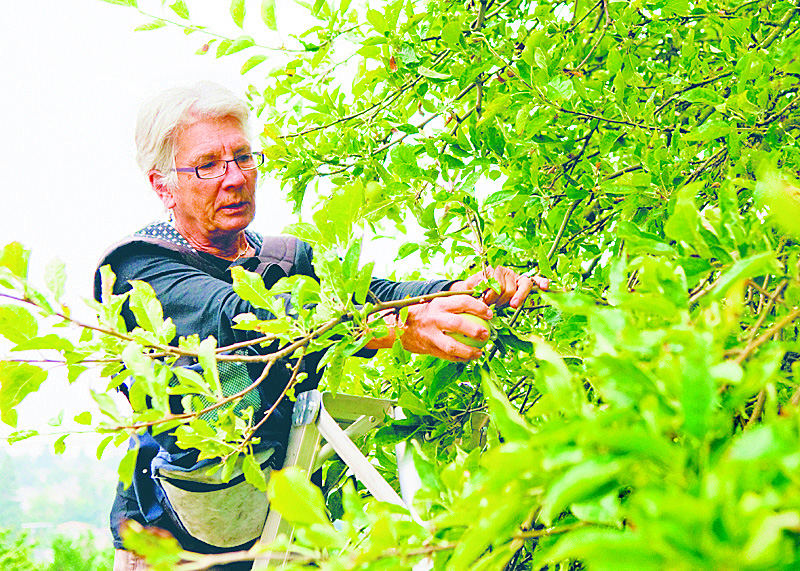Sitting over coffee and just-picked plums—soon to be supplemented with homemade pickled green beans, feta cheese, and bread—Gail Savina is remembering a call that recently came in to her organization, City Fruit.
“She said she had some fruit trees that she doesn’t know how to care for. When I paid her a visit, what I saw was almost unbelievable.” Savina pauses, throwing out her arms and leaving her mouth agape for a moment. “She’s basically sitting on an orchard. All these fruit trees in her backyard, hidden on Beacon Hill, just above Rainier Avenue. It’s just incredible.”
Thousands of fruit-bearing trees are scattered and clustered throughout Seattle, on private property and in public parks. Every summer, thousands of pounds of this fruit fall to the ground and rot, attracting pests and creating both a waste-management problem and a public-health hazard. Savina’s aim is to teach people how to properly care for trees and harvest the fruit, then make sure that fruit is put to use by people who need it.
For Savina, it’s new but not unfamiliar territory. For several years, she led the Community Fruit Tree Harvest for antipoverty group Solid Ground. There she coordinated and oversaw the harvest of massive amounts of fruit (last year Solid Ground collected nearly 10 tons), which was donated to people with limited access to fresh produce. Savina, whose background is in horticulture, couldn’t help but notice that for as much fruit was put to use, just as much went to waste because of worms, pests, and other preventable factors.
“I started to see a real need for stewardship of these trees, to educate people on how to take care of the fruit, to ensure future harvests.” This was the beginning of City Fruit.
Savina’s position at Solid Ground was grant-funded, meaning that every year she was hired in the spring, then laid off in the fall. So in November 2008, after the harvest was over, she gathered a group of associates, including a dedicated fruit fan who calls himself Donny Appleseed, to create City Fruit.
Savina’s roster of experts (“Let’s see…there’s a Mason Bee guy, a planting person, an apple-maggot expert, plus a coddling-moth specialist, and someone who knows a lot of about apple varieties, to name a few”) reflects the variety of City Fruit’s programs. They offer classes on pruning (seasonal pruning and espalier, a labor-intensive method of getting fruit trees and shrubs to grow in a single plane), protection from pests, and canning and preserving. They also run an online mapping project of fruit trees throughout the city.
City Fruit has established strong programs in Phinney Ridge and the South End, where fruit is delivered to local food banks and parents learn to dry fruit and donate it to their children’s schools for healthier snacks. The next phase is to create a system that can be replicated easily in other neighborhoods. A grant which currently gives City Fruit authority to steward trees in Seattle city parks is also helping Savina’s group develop a training curriculum for volunteers, so the army of fruit experts will grow.
After talking to Savina, your own view of Seattle may change. Adjust your gaze, even slightly, and you begin to see the “urban orchard” Savina describes, fruit trees rising from the landscape: plums, apples, pears, cherries, figs, quince. City Fruit’s work strengthens communities now, but in a town that was once home to many farms and orchards, it also paints a lovely, almost ghostly, portrait of Seattle’s past.





